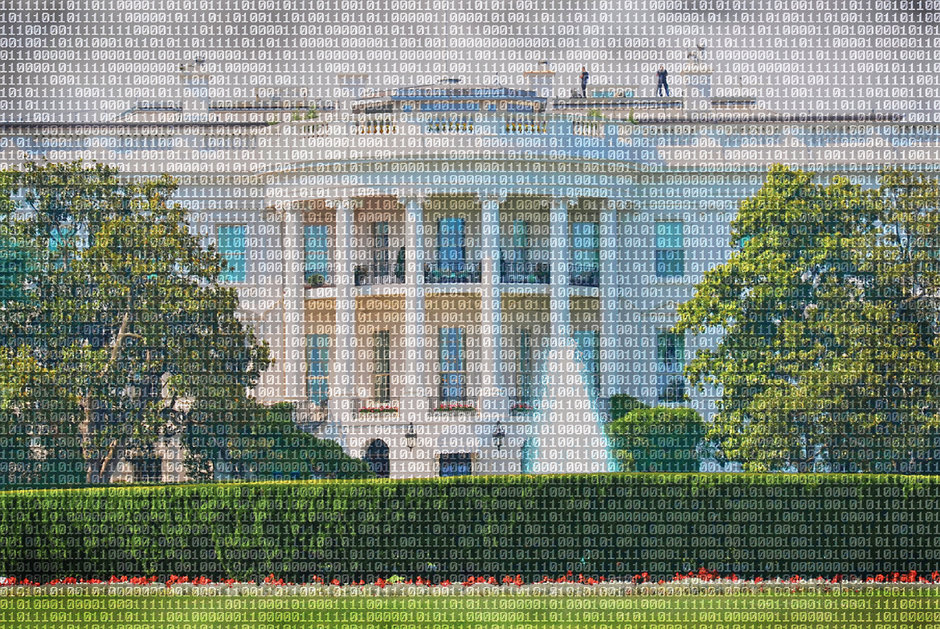US President Donald Trump signs an executive order on maintaining American leadership in AI with a focus on innovation, civil liberties, and jobs.
On Monday Trump signed the Executive Order on Maintaining American Leadership in Artificial Intelligence. The executive order has zero mentions of the military or weaponizing AI and instead focuses more on economic competitiveness with only a few vague references to national defense.
Trump’s new American AI Initiative is guided by five principles:
- The United States must drive technological breakthroughs in AI across the Federal Government, industry, and academia in order to promote scientific discovery, economic competitiveness, and national security.
- The United States must drive development of appropriate technical standards and reduce barriers to the safe testing and deployment of AI technologies in order to enable the creation of new AI-related industries and the adoption of AI by today’s industries.
- The United States must train current and future generations of American workers with the skills to develop and apply AI technologies to prepare them for today’s economy and jobs of the future.
- The United States must foster public trust and confidence in AI technologies and protect civil liberties, privacy, and American values in their application in order to fully realize the potential of AI technologies for the American people.
- The United States must promote an international environment that supports American AI research and innovation and opens markets for American AI industries, while protecting our technological advantage in AI and protecting our critical AI technologies from acquisition by strategic competitors and adversarial nations.
According to the executive order, “Artificial Intelligence will affect the missions of nearly all executive departments and agencies,” and these entities will have six strategic objectives:
- Promote sustained investment in AI R&D in collaboration with industry, academia, international partners and allies, and other non-Federal entities to generate technological breakthroughs in AI and related technologies and to rapidly transition those breakthroughs into capabilities that contribute to our economic and national security
- Enhance access to high-quality and fully traceable Federal data, models, and computing resources to increase the value of such resources for AI R&D, while maintaining safety, security, privacy, and confidentiality protections consistent with applicable laws and policies.
- Reduce barriers to the use of AI technologies to promote their innovative application while protecting American technology, economic and national security, civil liberties, privacy, and values.
- Ensure that technical standards minimize vulnerability to attacks from malicious actors and reflect Federal priorities for innovation, public trust, and public confidence in systems that use AI technologies; and develop international standards to promote and protect those priorities.
- Train the next generation of American AI researchers and users through apprenticeships; skills programs; and education in science, technology, engineering, and mathematics (STEM), with an emphasis on computer science, to ensure that American workers, including Federal workers, are capable of taking full advantage of the opportunities of AI.
- Develop and implement an action plan, in accordance with the National Security Presidential Memorandum of February 11, 2019 (Protecting the United States Advantage in Artificial Intelligence and Related Critical Technologies) (the NSPM) to protect the advantage of the United States in AI and technology critical to United States economic and national security interests against strategic competitors and foreign adversaries.
White House AI Strategy Doesn’t Mention DoD JAIC Program
The executive order hits upon many issues outlined in the 2016 report “Preparing for the Future of AI” that was published under the Obama administration.
Read More: White House report blends ethical AI practice with military applications
In 2016 the White House was just beginning to publicly recognize the power of AI, and it laid out a general outline of developments that were to come.
Under Obama, there was a heavy emphasis on weaponizing AI and how to regulate autonomous weapons systems.
“The United States has incorporated autonomy in certain weapon systems for decades, allowing for greater precision in the use of weapons and safer, more humane military operations. Nonetheless, moving away from direct human control of weapon systems involves some risks and can raise legal and ethical questions,” the 2016 report reads.
What Trump’s new executive order does not mention is that under his administration the US military and the intelligence community have been hard at work looking to “operationalize” AI for military purposes.
Read More: US defense intelligence warns of AI-human hybrid soldiers from China
In July, 2018 the US Department of Defense (DoD) formed the Joint Artificial Intelligence Center (JAIC) as a response to ongoing advances in artificial intelligence that “will change society and, ultimately, the character of war.”
The JAIC is intended to enhance the ability for DoD components to execute new AI initiatives, experiment, and learn within a common framework.
Read More: DoD needs ‘more of a startup mentality when looking at tech like AI’: Defense CIO
Components will initially coordinate each AI initiative that totals more than $15 million annually with the JAIC in order to ensure that the DoD is creating department-wide advantages.












